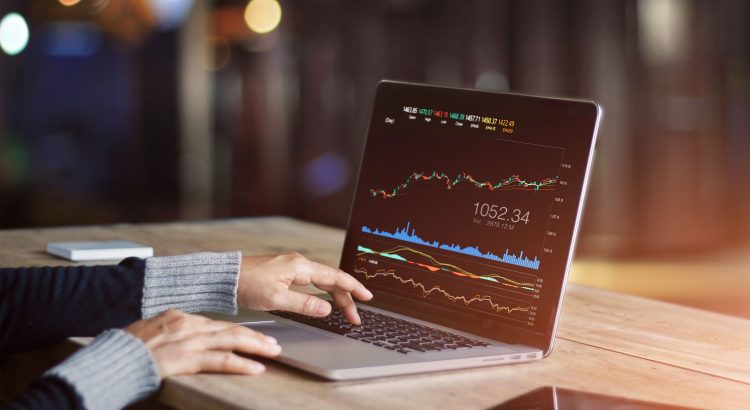Online Forex Trading
In today’s interconnected world, financial markets offer a plethora of opportunities for individuals seeking to grow their wealth.
One such avenue is online forex trading, which allows you to trade currencies from the comfort of your home. While it can be a lucrative endeavor, it’s essential to approach it with knowledge, discipline,
and a sound strategy. This blog post will serve as a beginner’s guide to online forex trading, providing insights into the basics, potential risks, and strategies to help you navigate this exciting yet complex market.
What is Forex Trading?
Forex, short for Foreign Exchange, refers to the global market where currencies are traded. When you engage in forex trading, you’re essentially buying one currency while simultaneously selling another. The aim is to profit from fluctuations in exchange rates.
Key Terms to Know:
- Currency Pair: A pair of currencies traded against each other, such as USD/EUR or GBP/USD.
- Pip: The smallest price movement in a currency pair.
- Lot Size: The unit of measurement for a forex trade.
- Leverage: Borrowing funds from a broker to increase your trading position.
- Spread: The difference between the buying and selling price of a currency pair.
How Does Forex Trading Work?
At its core, forex trading is a decentralized marketplace where currencies are bought and sold against one another. Unlike traditional markets, which operate on fixed exchanges, the foreign exchange market thrives in a 24-hour cycle driven by global economic factors,
geopolitical events, and market sentiment. Traders leverage currency pairs—such as EUR/USD or GBP/JPY—capitalizing on fluctuations between national economies to gain profit. This dynamic environment creates opportunities not just for seasoned traders but also for novices willing to learn.
One fascinating aspect of forex trading lies in its inherent volatility and liquidity; these qualities can lead to significant profit margins if approached wisely. Traders utilize various analytical techniques—
from fundamental analysis that examines economic indicators to technical analysis focused on chart patterns—to formulate strategies tailored to their risk tolerance and investment goals. Moreover, advancements in technology have democratized access to the forex market,
allowing anyone with an internet connection to trade from anywhere around the globe. As this arena evolves, traders find themselves grappling not only with conventional indicators but also with emerging tools like machine learning
algorithms that bring new insights into predictive analytics. This confluence of tradition and innovation makes forex trading a continually captivating field for those eager to navigate its complexities.
- Open a Brokerage Account: Choose a reputable forex broker and open an account.
- Deposit Funds: Transfer funds to your trading account.
- Choose a Trading Platform: Select a user-friendly platform to execute trades.
- Analyze the Market: Use technical and fundamental analysis to identify trading opportunities.
- Place a Trade: Execute a buy or sell order for a specific currency pair and lot size.
- Monitor Your Position: Keep track of your trade’s performance and manage risk.
- Close the Trade: Exit the trade when you’ve reached your profit target or stop-loss level.
Potential Risks and Rewards
Forex trading offers significant potential rewards, including:
- High Liquidity: The forex market is highly liquid, allowing for easy entry and exit.
- 24/5 Market Access: Trade currencies around the clock.
- Leverage: Amplify potential profits (and losses).
However, it’s crucial to acknowledge the risks associated with forex trading:
- Market Volatility: Currency exchange rates can fluctuate rapidly.
- Leverage Risk: While leverage can magnify profits, it can also amplify losses.
- Psychological Challenges: Emotional decisions can lead to poor trading outcomes.
Strategies for Successful Forex Trading
Successful forex trading hinges on a blend of artistry and science, where traders must not only finesse their analytical skills but also cultivate emotional discipline. One powerful strategy is the implementation of a robust risk management plan,
which entails setting strict stop-loss levels and position sizing to protect against unexpected market shifts. This proactive approach allows traders to maintain sanity in volatile environments, preserving capital for future trades while enabling them to trade with confidence rather than fear.
Moreover, mastering the art of technical analysis can set traders apart from the crowd. Familiarizing oneself with advanced indicators like Fibonacci retracement levels or moving averages not only enhances
entry and exit points but also unveils underlying market psychology. By interpreting these signals through charts and patterns, traders can anticipate potential reversals or continuations in trends, effectively
positioning themselves ahead of moves that others might miss. Embracing a holistic view by integrating both fundamental factors—like economic news releases—and technical signals fosters a more comprehensive trading strategy that captures opportunities across different market scenarios.
- Develop a Solid Trading Plan: Outline your goals, risk tolerance, and trading strategy.
- Continuous Learning: Stay updated on market trends, economic indicators, and trading techniques.
- Risk Management: Implement stop-loss and take-profit orders to limit potential losses.
- Emotional Control: Avoid impulsive decisions and stick to your trading plan.
- Diversification: Spread your investments across multiple currency pairs.
Conclusion
Online forex trading can be a rewarding venture, but it requires dedication, discipline, and a thorough understanding of the market. By following these guidelines and continuously honing your skills, you can increase your chances of success in this dynamic and exciting field. Remember, it’s essential to start with a modest investment, learn from experienced traders, and never risk more than you can afford to lose.
FAQ
What is Forex Trading?
Forex, short for Foreign Exchange, is the global market where currencies are traded. It’s the largest and most liquid financial market in the world. Forex traders buy one currency while simultaneously selling another, aiming to profit from fluctuations in exchange rates.
How Does Forex Trading Work?
- Open a Brokerage Account: Choose a reputable forex broker and open an account.
- Deposit Funds: Transfer funds to your trading account.
- Choose a Trading Platform: Select a user-friendly platform to execute trades.
- Analyze the Market: Use technical and fundamental analysis to identify trading opportunities.
- Place a Trade: Execute a buy or sell order for a specific currency pair and lot size.
- Monitor Your Position: Keep track of your trade’s performance and manage risk.
- Close the Trade: Exit the trade when you’ve reached your profit target or stop-loss level.
What are the Risks of Forex Trading?
- Market Volatility: Currency exchange rates can fluctuate rapidly.
- Leverage Risk: While leverage can amplify profits, it can also amplify losses.
- Psychological Challenges: Emotional decisions can lead to poor trading outcomes.
How Can I Minimize Risks?
- Educate Yourself: Learn about forex trading, market analysis, and risk management.
- Start Small: Begin with a modest investment to gain experience.
- Use Stop-Loss Orders: Set predetermined exit points to limit potential losses.
- Diversify Your Portfolio: Spread your investments across multiple currency pairs.
- Emotional Control: Avoid impulsive decisions and stick to your trading plan.
What is Leverage?
Leverage allows you to control a larger position with a smaller amount of capital. It can amplify both profits and losses. While it can be a powerful tool, it’s crucial to use it wisely and manage risk effectively.
What is a Pip?
A pip is the smallest price movement in a currency pair. It’s typically the fourth decimal place for most pairs.
What is a Lot Size?
A lot size is a standardized unit of measurement for a forex trade. Common lot sizes include micro, mini, and standard lots.
What is Fundamental Analysis?
Fundamental analysis involves studying economic indicators, political events, and other factors that can influence currency exchange rates.
What is Technical Analysis?
Technical analysis involves using charts and technical indicators to identify trends and patterns in price movements.
How Can I Learn More About Forex Trading?
- Online Courses: Many online platforms offer forex trading courses.
- Trading Books: Read books written by experienced traders.
- Practice Accounts: Use demo accounts to practice trading without risking real money.
- Join Trading Communities: Interact with other traders and share knowledge.






